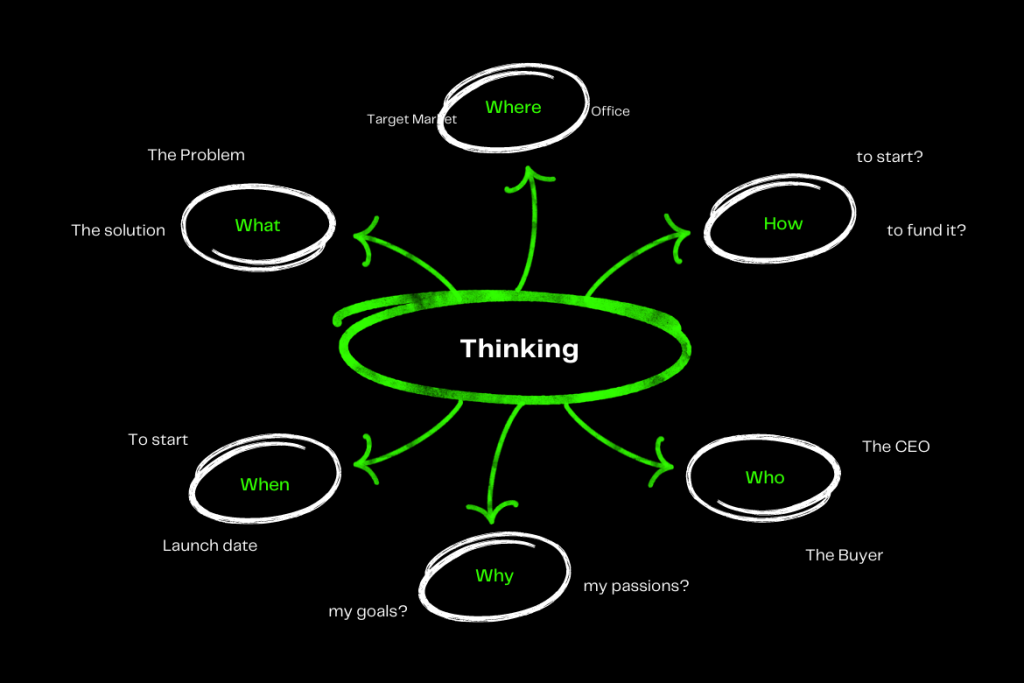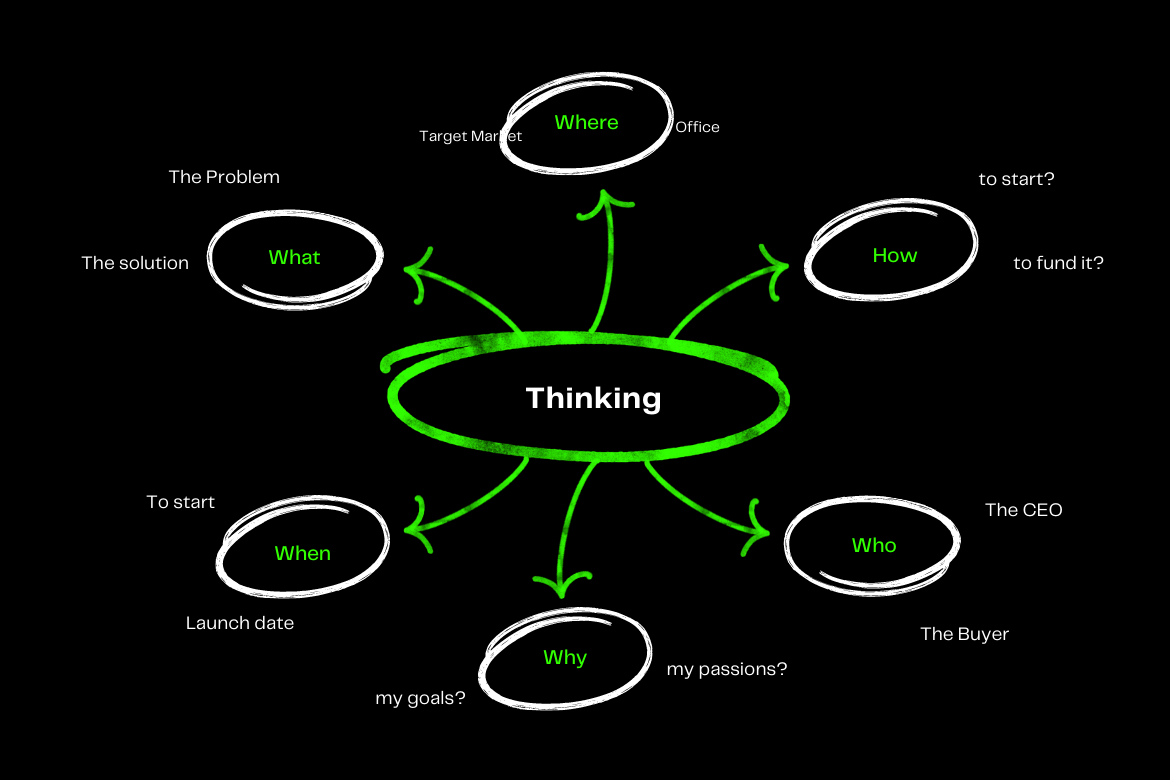Thinking Fast and Slow is a plan of mind. The heart feels about and the mouth delivers them. Man is a great thinker and thinking is a form of exercise of his conscious mind. It’s a sign of intellectual activity with an alert mind and active mental process. Learn more.
- Types Of Thinking within Thinking Fast and Slow
- Daydreaming Thinking
- There are 15 Subcategories of Thinking Fast and Slow
- Abstract Thinking Fast and Slow
- Conceptual Thinking Fast and Slow
- Constructive Thinking Fast and Slow
- Creative Thinking Fast and Slow
- Critical Thinking Fast and Slow
- Directed Thinking Fast and Slow
- Functional Thinking Fast and Slow
- Non-Verbal Thinking Fast and Slow
- Reflective Thinking Fast and Slow
- Relational Thinking Fast and Slow
- Realistic Thinking Fast and Slow
- Scientific Thinking Fast and Slow
- Symbolic Thinking
- Selective Thinking
- Analogical Thinking
Types Of Thinking within Thinking Fast and Slow
One is of the imaginative type and the other is the creative type. Thinking and language are closely related. Creative thinking finds out solutions stage-wise.
Stage 1: This is the stage of preparation. In this stage, the thinker needs preparation for thinking and collects facts and materials, which are considered necessary for new solutions.
Stage 2: This is the stage of initiation or the period of incubation. The second stage of thinking is called the initiating stage or the incubation period, in which the thinker tends to forget or face the initial hurdle or problem of thinking and tries to find clues for the solution.
Stage 3: This is the stage of illumination. It is the stage of illumination in which the thinker suddenly finds an idea for clear visualization of the solution.
Stage 4: This is the stage of evaluation. It’s the stage of evaluation of ideas, which are tested to see the satisfactory solution to the problem.
Stage 5: This is the stage of revision and modification. It is the stage of revising and modifying some minor problems for the perfect solution to the problem.
Daydreaming Thinking
On the other hand, the imaginative type of thinking is a sort of daydreaming and planning for the future. It takes place in the absence of original sensory stimuli and involves a lot of active mental processes. The creative type of thinking is some form of thinking special and is considered to be the highest form of thinking.
The higher center of the brain, the cerebral cortex is the basis of this kind of thinking process. The discoveries and inventions are the outcomes of this kind of creative thinking. Thinking involves perception, good memory, power of imagination, reasoning, and problem-solving e.g. correct thinking can always find a correct solution to any kind of problem. The correct thinking is realistic and literal thinking.
There are 15 Subcategories of Thinking Fast and Slow
- Abstract
- Conceptual
- Constructive
- Creative
- Critical
- Directed
- Functional
- Non-Verbal
- Reflective
- Relational
- Realistic
- Scientific
- Symbolic
- Selective
- Analogical
Abstract Thinking Fast and Slow
To implement effective learning, a person can use this abstract thinking. Abstract thinking functions on various thinking and reflection altogether, which can be subdivided into five categories.
(1)To Plan and Prepare for Learning
A suitable plan and preparation for learning can help a person reach his/her goal. This type includes planning, reasoning, and solving.
(2)To select and use the Learning Technique
To enable or be enabled to pick up the right method of thinking and use in learning might be focused. You can get help from your superiors or specialists in this regard. Consultation with your superiors can help you select precisely, materialize minutely, and gain efficiency.
(3)To monitor and mentor the Technique
The specialists need to supervise and give feedback from time to time. To show off the wrong conceptions and guide properly to materialize the motto of learning. Intensive care should be given so that the subordinate might not take the wrong concept.
(4)To adjust with other Techniques
An important way to learn something masterfully is to coordinate with other techniques already planned and sorted out points. This is how a person can think well and get the output properly.
(5)To effectively Evaluate Technique
The specialists can help the user how to think effectively and assess the objectives of learning. Let the user know how far s/he could think, which methods s/he used, how effectively s/he could use the thinking, and beyond this what s/he can do else. In fine, this is regarded as the Metacognitive Skills of the thinker.
Conceptual Thinking Fast and Slow
This type of thinking relates to mixing abstract ideas to create new ones and reflect on the previous decisions whether they are right or wrong. Concepts regarding any probable solutions can lead to the right path in the future.
Constructive Thinking Fast and Slow
Constructive thinking creates your way. To analyze a situation how to face it, when to face it, what to face it, with whom to face it, and where to face can help you succeed in situations. Positive thinking may dominate over paving the track. In constructive thinking, rationalism is preferred when it’s established with proof. It flourishes real development in an individual.
Creative Thinking Fast and Slow
Creative Thinking means thinking of something new, easy, and fresh way to reach a solution. Creative Thinking is always preferable to all. Everyone appreciates this thinking. Creativity takes one high. The innovative thinking of an individual sharpens his life. Quick-witted people can solve any upcoming problems. They have huge creativity to take on any challenge. Creativity is always a unique innovation, an appreciating, and surprising thing. this is an inborn or by-born quality.
Critical Thinking Fast and Slow
Critical thinking is defined as analyzing any facts with evidence, observation, and logical reasoning to justify any complexity. This analysis is usually unbiased, precise, and authentic which helps evaluate any situation. Critical Thinking clears the obstacles from your way and paves a good track to success. An intellectual individual having this inborn quality and skill can reach the zenith of success.
Directed Thinking Fast and Slow
Directed Thinking is a controlled and purposeful skill to reach an absolute goal by solving any problem. This type is defined as suggestive thinking to face any obstacle in your way in life. The skilled persons usually guide you on how to encounter a situation and bring the expected outcome. The present is its initial point and the future is its goal.
Functional Thinking Fast and Slow

Functional thinking is a fixed pattern of thinking. This is generally a plan to materialize something effectively. A pre-decided plan is its outcome. From its start to the end, this thinking functions like a mirror and gradually reaches your aim. Functional thinking is almost similar to a type of representational thinking that focuses on two varying quantities.
Non-Verbal Thinking Fast and Slow
Natural Thinking occurring frequently in the mind is treated as non-verbal thinking. No word, but thinking and reflecting in real-life situations is its motto. This thinking evolves in picture analysis and the process of materializing something more effectively. This is the process of perceiving something through the mind’s eye. Here we use symbols, images, signs, and gestures to express our non-verbal thinking. Our sensory functions like a moving machine.
Reflective Thinking Fast and Slow
Thinking, overthinking, and thinking about a bigger thing and its consequences is Reflective Thinking. Reflective Thinking enhances Attitude. Attitude reflects on learning wisely. It creates likings, dislikes, etc. This influences the Cognitive, Affective, and Actionable tendencies of the individual.
Relational Thinking Fast and Slow
Relational Thinking emphasizes the interaction among things and objects like how they are related to each other, what might be their consequences, and which reactions may occur. While producing relational thinking, the individual must be aware of the interactions of things and their later consequences. This is an attributive metaphor for actions.
Realistic Thinking Fast and Slow
Realistic Thinking centers the realism. The individuals believe in seeing and believing. What can be seen is reality. They only think about the existing objects. They feel curious to discover. That’s why they search and drive research to discover something potential in objects. They keep practicing knowledge. The basic philosophical theory of realistic thinking encourages an individual to practical conscience. Education, peace, progressiveness, civilization, and culture are the fundamental theories of realistic thinking.
Scientific Thinking Fast and Slow
Science always looks for proper and proven logic and reasoning. Scientific thinking of an individual might look for deeply rooted objects, in which they try to find out something why and how to happen, their base, and sustainability. They examine, experiment, observe, acquire knowledge, analyze, research, and jump to a conclusion. Scientific thinking presents various reasoning theories and solves the issues. Scientific logic is preferred for the development of education and civilization. Religion, beliefs, and values are dependent on scientific reasoning and thinking.
Symbolic Thinking
Symbolic Thinking deals with symbols, signs, images, abstract objects, and concepts regarding them. An individual tries to pick up clear concepts while thinking over a symbol that represents something. He analyzes, synthesizes, and evaluates the object through symbolic thinking. This theory may differ from man to man. Consistencies may hardly be found among symbolic thinkers.
Selective Thinking
Selective Thinking includes particular thinking like picking up useful facts by avoiding irrational, unorthodox, and obnoxious ideas or facts. To avoid emotional discomfort is the motto of selective thinking. For example, while walking along the road, if you deny looking at a girl who is in an indecent dress you need not reflect on or visualize her figure that might cause stimulation or emotional feelings in your mind.
Analogical Thinking
A specific way of thinking about some similar things with other dissimilar things by proper reasoning of their facts or ideas. To think of a comparison of similar things, often use something familiar to explain something unfamiliar. For example, the work of the heart is explained by comparing it to a pump. Although the two items being compared in an analogy may be similar in several ways, they are not identical. The whole truth about one is not the whole truth about the other. An analogy pushed beyond the points of similarity thus breaks down and loses its effectiveness.



1 comment
Excellent post. I certainly love this website. Continue the good work!